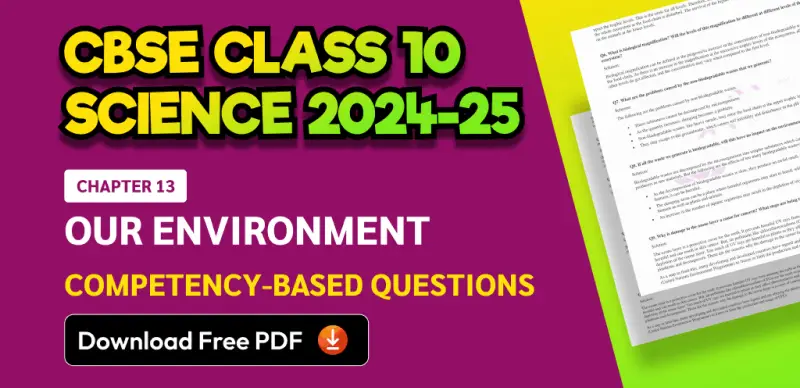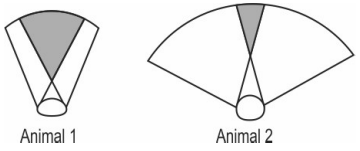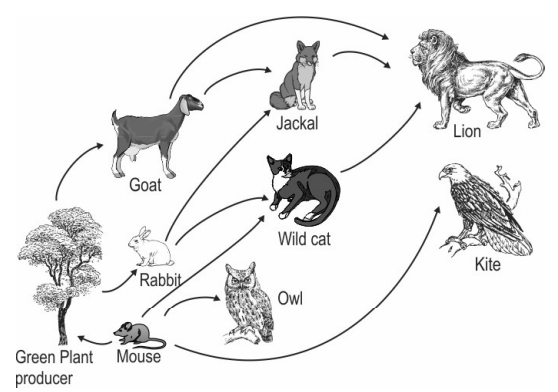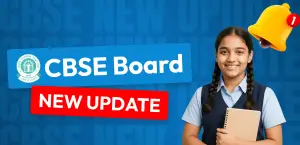CBSE Class 10 Science 2024-25: Chapter 13 Our Environment Competency-Based Questions with Answers; Download Free PDF

SHARING IS CARING
If our Website helped you a little, then kindly spread our voice using Social Networks. Spread our word to your readers, friends, teachers, students & all those close ones who deserve to know what you know now.
As the CBSE Class 10 board exams get closer, it’s important for students to understand the new exam pattern. Starting in the 2024-25 school year, CBSE will include 50% more competency-based questions. These questions will be both multiple choice and written, focusing on how to use what students have learned in real-life situations.
This article explores Chapter 13: Our Environment. It highlights key competency-based questions and provides answers to help students succeed. Prepare for your CBSE Class 10 Science exams with important competency-based questions from Chapter 13: Our Environment.
CBSE Class 10 Science Chapter 13: Our Environment Important Competency-Based Questions
Q.1 Fishes like swordfish and king mackerel are tertiary consumers. Fishes like tilapia and salmon are secondary consumers. The habitat of these fishes are usually contaminated with heavy metals like mercury. Scientists suggest consuming these fishes according to the table given below:

What phenomenon is likely to have led the scientists to give such an advisory to the people who consume fish?
Answer. biomagnification of toxic substances in higher trophic levels
Answer the following questions based on the given information.
Hydrogen gas is an excellent fuel. It has a high calorific value and produces only water as the product of combustion. It is considered to be a potentially important, non-polluting energy source of the future.
Hydrogen is labelled with different 'colours' based on the method by which it is produced, as given below:
- green hydrogen: manufacturing process does not produce carbon dioxide
- blue hydrogen: manufacturing process produces carbon dioxide but it is separated and stored
- grey hydrogen: manufacturing process produces carbon dioxide which is released into the air
Q: 2 Hydrogen is labelled 'brown' if the manufacturing process releases both carbon dioxide and carbon monoxide to the air.
In what way is the manufacturing process of brown hydrogen WORSE than that of grey hydrogen for the environment?
1. It releases into the atmosphere a gas that directly causes a greenhouse effect.
2. It releases into the atmosphere carbon which was stored for millions of years.
3. It releases into the atmosphere a gas that is toxic to human beings.
4. It releases into the atmosphere gases that cause acid rain.
Answer. 3
Q: 3 What is the ratio of average amount of energy absorbed by producers to the average amount of energy absorbed by the primary consumers?
1. 1:2
2. 2:1
3. 1:10
4. 10:1
Answer. 4
Q: 4 Which of the following describes the flow of energy and nutrients, respectively, through the ecosystem?
1. bidirectional and cyclic
2. cyclic and bidirectional
3. unidirectional and cyclic
4. cyclic and unidirectional
Answer. 2
Answer the two following questions based on the information given below.
Shown here is the extent to which two different animals can see in either direction without turning their heads. In animal 1, the eyes are placed towards the front of the head and in animal 2, the eyes are placed on either side of the head.

Since the placement of eyes in the two animals is different, their vision is also slightly different.
In the figures above, the grey part represents the parts that can be seen by both eyes at a time, whereas the white parts represent those parts that can be seen only by one eye at a time.
Animal 2 can see a broader area at any time compared to animal 1. Animal 1 can distinguish depths better compared to animal 2.
| Download PDF | |
| CBSE Class 10 Science Chapter 1 Chemical Reactions & Equation: Important Competency-Based Questions 2024-25 | Click Here |
| CBSE Class 10 Science Chapter 2 Acids, Bases and Salts: Important Competency-Based Questions 2024-25 | Click Here |
| CBSE Class 10 Science Chapter 3 Metal and Non-metal: Important Competency-Based Questions 2024-25 | Click Here |
| CBSE Class 10 Science Chapter 4 Carbon and its Compounds: Important Competency-Based Questions 2024-25 | Click Here |
| CBSE Class 10 Science Chapter 5 Life Processes: Important Competency-Based Questions 2024-25 | Click Here |
| CBSE Class 10 Science Chapter 6 Control and Co-ordination: Important Competency-Based Questions 2024-25 | Click Here |
| CBSE Class 10 Science Chapter 7 Reproduction: Important Competency-Based Questions 2024-25 | Click Here |
| CBSE Class 10 Science Chapter 8 Heredity and Evolution : Important Competency-Based Questions 2024-25 | Click Here |
| CBSE Class 10 Science Chapter 9 Heredity and Evolution : Important Competency-Based Questions 2024-25 | Click Here |
| CBSE Class 10 Science Chapter 10 Human Eye and Colourful World Refraction : Important Competency-Based Questions 2024-25 | Click Here |
| CBSE Class 10 Science Chapter 11 Electricity : Important Competency-Based Questions 2024-25 | Click Here |
| CBSE Class 10 Science Chapter 12 Magnetic Effects of Electric Current: Important Competency-Based Questions 2024-25 | Click Here |
| CBSE Class 10 Science Chapter 12 Our Environment: Important Competency-Based Questions 2024-25 | Click Here |
Q: 5 Based on this, which of the two animals is most likely to be a predator and why?
Answer. Animal identified correctly as Animal 1.
Reason shared correctly: Animal 1, because it will be able to judge the distance and the movement of the prey accurately.
Q: 6 Observe the following food web. Classify the animals into two groups - one that would
need to have vision as Animal 1 and another as Animal 2 in the diagram above.

Answer. Animal 1: lion, jackal, kite, wild cat and owl
Animal 2: mouse, goat, rabbit
Q.7

Arrange the four objects given above according to the time they take to get biodegraded (LEAST time TO MOST time).
Answer. paper sheet, bone, metal can, plastic bottle
Q: 8 Answer the following questions about transfer of materials in the ecosystem.
(a) Mention TWO ways by which energy is lost from the trophic levels in the ecosystem.
(b) A lot of harmful chemicals enter our body through different sources like food. Since human beings are at the top of the food chain/ trophic structure, maximum concentration of such chemicals is found in human beings. What is this phenomenon known as?
Answer. (a) 1 mark for each correct answer such as:
- as heat
- in maintaining life processes
- utilised in growth and storage
(b) biological magnification or biomagnification
Q: 9 The stratosphere is very dry and rarely allows clouds to form. In the extreme cold of the polar winter, however, stratospheric clouds of different types may form. These clouds are called Polar Stratospheric Clouds (PSCs).
Scientists recently discovered that polar stratospheric clouds, long known to play an important role in Antarctic ozone destruction, are occurring with increasing frequency in the Arctic. These high-altitude clouds form only at very low temperatures help destroy ozone in two ways: (1) They provide a surface which converts benign forms of chlorine into reactive, ozone-destroying forms, and (2) they remove nitrogen compounds that moderate the destructive impact of chlorine. In recent years, the atmosphere above the Arctic has been colder than usual, and polar stratospheric clouds have lasted into the spring. As a result, ozone levels have been decreasing.
(Information credit: NASA)
(a) How is ozone formed in the outer atmosphere?
(b) Ozone is being continuously destroyed due to extreme low temperatures. However, ozone formation is also a continuous process. Why is there a depletion in the ozone layer still?
(c) What can be a positive effect of global warming on the depletion of the ozone layer?
(d) How does ozone layer depletion impact human health?
Answer. (a) 1 mark for each correct step of the process:
- The higher energy UV radiations in the higher levels of atmosphere split apart some molecular oxygen (0,) into free oxygen (O) atoms.
- These atoms then combine with the molecular oxygen to form ozone.
(b) because the rate of destruction is higher than the rate of formation
(c) Rise in polar temperature might restrict the formation of PSCs and reduce the depletion of the ozone layer.
(d) Removal of ozone layer allows harmful UV radiations to enter and cause diseases like skin cancer.
Q: 10 Lions have no known natural predators.
Based on energy transfer in a food chain, what could be the most likely reason for the above statement?
Answer. Lions generally occur at the tertiary or quaternary levels in a food chain and energy available after that trophic level is not sufficient for sustenance.
-
👉 Read Also- CBSE Class 10 Half-Yearly/Mid Term 2024-25 : Most Important Questions with Answers; PDF Download (All Subjects)
👉 CBSE Class 10 Study Materials
| CBSE Class 10 Syllabus 2024-25 | NCERT Solutions For Class 10 |
| CBSE Class 10 Previous Year Question Papers | CBSE Class 10 Books |
| CBSE Class 10 Full Study Material | CBSE Class 10 Sample Paper |







 Profile
Profile Signout
Signout












 Quiz
Quiz
 Get latest Exam Updates
Get latest Exam Updates 










